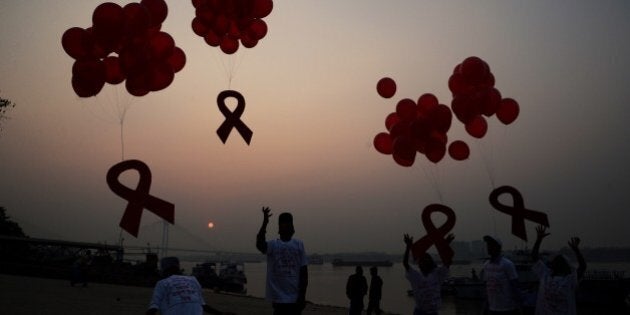
This week's International AIDS Society (IAS) Conference, hosted in Vancouver for the first time in nearly two decades, marks yet another milestone. The gold standard in HIV treatment (highly active antiretroviral therapy or HAART) was first introduced at the 1996 Vancouver IAS Conference. This was a pivotal moment, when HIV infection became a chronic manageable condition.
The 2015 IAS Conference, attracting around 6,500 delegates from all over the world, comes on the heels of three major achievements. It was announced this week that the Millennium Development Goal (MDG) of 15 million people on antiretroviral therapy by 2015 has been met. This is the first MDG that has been met, and we have done so nearly nine months ahead of schedule. There was also the recent release of the TEMPRANO and START trials confirming that immediate antiretroviral treatment for HIV reduces disease progression by about a half. Finally, there was the announcement of the final results of the HPTN 052 trial showing that an HIV infected person who faithfully takes effective antiretroviral therapy is virtually not able to pass on the virus. Furthermore, research studies from Vancouver, San Francisco, KwaZulu-Natal and Rwanda conclusively showed the strategy works in rich and in resource-limited settings. In other words: treatment fully prevents disease progression to AIDS, premature death and secondarily HIV transmission, through every means, all the time and everywhere.
Treatment as Prevention (TasP), pioneered in B.C. with support from the provincial government and introduced to the world nearly a decade ago at the 2006 IAS Conference in Toronto, has gained the day.
The world has now come to agreement that we need to provide treatment as early as possible (regardless of CD4 cell count level) to those living with HIV. This is a time to shine a light on the gains made in B.C. -- the only Canadian province to implement TasP and the only one to see a consistent decline in new HIV cases (65 per cent since 1994). At this year's IAS Conference, delegates and leaders signed on to the Vancouver Consensus, calling for the provision of immediate treatment to those diagnosed with HIV.
In a historic moment, at the conference opening, I read a letter from the Vatican to the BC-CfE that honoured the lives saved through TasP -- giving "witness to the possibilities for beneficial outcomes when all sectors of society unite in common purpose." Pope Francis called for all those living with HIV to be reached by treatment and joined other prominent figures who have endorsed the game changing TasP strategy, such as former U.S. President Bill Clinton.
TasP has been adopted progressively by jurisdictions around the world, including France, Spain, Panama, Sierra Leone, Tanzania, major US cities and the state of Queensland in Australia -- to name a few. Brazil, a forerunner in implementing universal access to antiretroviral therapy over a decade ago, redoubled its commitment by embracing the proposed UN 90-90-90 target, which asks that by 2020 we should have at least 90 per cent of people living with HIV diagnosed globally, 90 per cent of them on antiretroviral therapy and 90 per cent of them virologically suppressed. Meeting the 90-90-90 target by 2020 will ensure that AIDS incidence, premature mortality and new HIV infections will decrease by 90 per cent by 2030 (from 2010 levels). Doing so would put us on a path to ending AIDS as a pandemic disease by 2030.
At this point in history, it is upon political leaders to either join a science-based movement to end AIDS or to be left behind. Despite our progress, every day about 5,600 people contract HIV. In 2014, 1.2 million people died of AIDS and nearly 22 million people living with the disease are currently not accessing treatment. In particular, many children living with HIV are not being reached by lifesaving therapy.
To reach an AIDS-free generation, we will need political leadership, which should translate into full financing of the 90-90-90 target. We have been told repeatedly global funding for HIV and AIDS has reached a plateau -- at a time when a ramp up will save millions of lives, prevent millions of new infections and save money. Indeed, research by the BC-CfE released at this year's IAS Conference found expanding TasP in B.C. would result in $66.5 million in savings in health care and societal costs.
Unfortunately, the Canadian federal government is missing in action. In December 2013, Canada pledged approximately $6 per Canadian per year to global AIDS funding, far less than the nearly $10 per Nordic citizen. Underwhelming investment is characteristic of a broader trend from Ottawa. HIV treatment coverage is lacking and uneven within this country's own borders. The criminalization of vulnerable, at-risk groups such as injection drug users and sex workers (through legislation such as C2 and C36) creates further stigma and barriers to treatment.
TasP and it's related 90-90-90 target are the unequivocal, evidence-based path to ending the AIDS pandemic, the biggest health challenge of the last generation. Applying the same principles to other infectious disease, like hepatitis C, and even socially communicable illnesses, such as addiction, could result in more robust and sustainable health care system.
As we close the 2015 IAS AIDS Conference in Vancouver, we call on the leaders of the world to join us to end the AIDS pandemic. The scientific evidence is all in, the UN 90-90-90 target is the only way forward. There is nowhere to hide. You are either with us or against us! We demand you deliver on the promise of an AIDS-free generation by fully embracing and funding the UN 90-90-90 target, domestically and internationally.
MORE ON HUFFPOST: